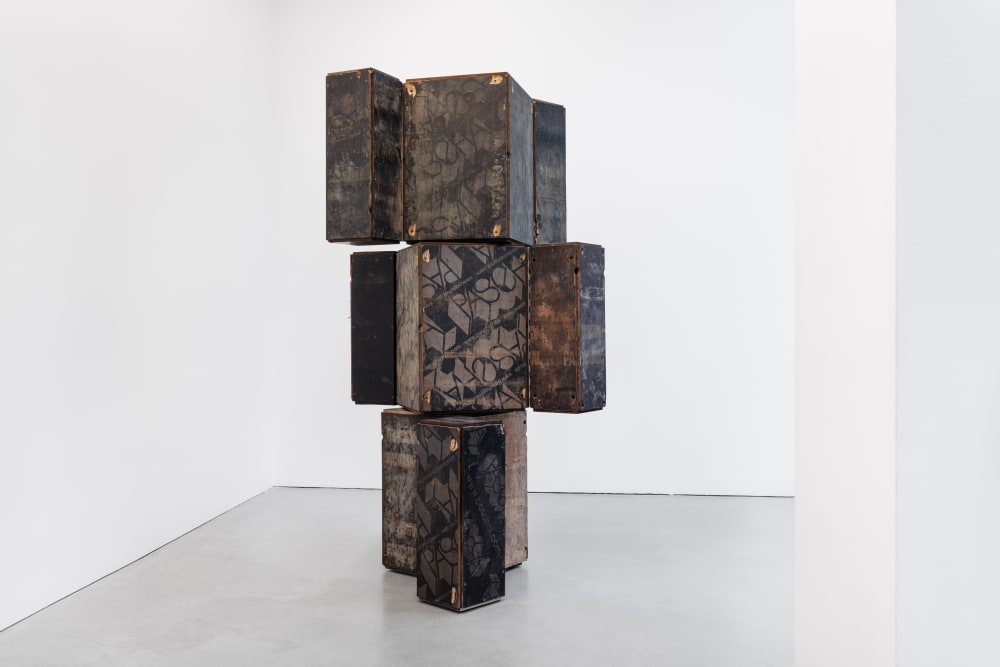Franka Hörnschemeyer: Franka Hörnschemeyer
-
Introduction
As part of this year’s Gallery Weekend Berlin (April 26–28, 2013), Galerie Thomas Schulte will present a site-specific installation by Franka Hörnschemeyer in the gallery’s Corner Space. Hörnschemeyer’s installation will stand next to a larger solo exhibition with the American sculptor, Alice Aycock.
Franka Hörnschemeyer, who lives and works in Berlin, focuses her work on a multifaceted approach to redefining spatial conditions. As she explains, “To me a space represents a construction made up of social, historical, and psychological relationships that are constantly in an interplay with people. I examine these relationships and reorganize them.” As a rule, Hörnschemeyer’s special constructions are developed site-specifically, challenging the viewer to explore them through movement.
Unlike her previous constructions, Hörnschemeyer’s installation at Galerie Thomas Schulte is not set into movement by the viewer, but through a motor from within the construction itself. The construction’s mobile, horizontally swinging elements embody the principle of a marionette, questioning the relationship between gracefulness and movement. The elements divide the Corner Space into two levels, altering its outward perception. The horizontal elements create space by composing a type of suspended ceiling. At the same time, the construction is a moving figure, behaving within the room, much like a viewer would.
The installation’s title, Im Innern der Figur, references Heinrich von Kleist’s essay, Über das Marionettentheater (On the Puppet Theatre), in which the author describes a dialogue between the narrator and a dancer who admires the natural grace of the marionette. Here, Kleist writes, “Every movement, he said, has a focal point. It would suffice to control this from within the figure – the limbs, which would be mere pendulums, would follow, without needed assistance, in their own mechanical way.” (Heinrich von Kleist, Über das Marionettentheater, Berlin 1810)
Due to conscious reflection, the dancer cannot match the natural gracefulness of the marionette. This means that the marionette’s absolute gracefulness would only be realizable if “it’s dance were to slip completely into a mechanical realm,” rather than being controlled by the human hand. This principle is of the central aspects being expressed in Hörnschemeyer’s installation. Furthermore, it finds a stage to perform on in the gallery’s Corner Space, whose big arched windows open onto Leipzigerstrasse.
Additionally, Hörnschemeyer’s digitally mastered Piezo prints, will be on display in the gallery’s Window Space. Some of these prints represent outlines of already existing works, including LaSound 908 – from the 2008 Berlin exhibition, Megastructure Reloaded – as well as Konditional, the interactive moving foundation of the Polish city Zamość. These prints, in form of layouts, allow us to understand the transparency of special systems, which run through the construction like labyrinths. On the other hand, the title of the series here exhibited, Diffusion und Konfusion, does not merely reference the finished project, but cryptological concepts. In this sense, it focuses on two basic principles of encryption that are fundamental to Hörnschemeyer’s work. Whereby Konfusion describes the blurring of the relationship between plain-language and secrete code and Diffusion suggests the principle of dissolving statistical structures.
-
Installation Views
-
Works
-
Artists on view
-
Inquire about works by Franka Hörnschemeyer




